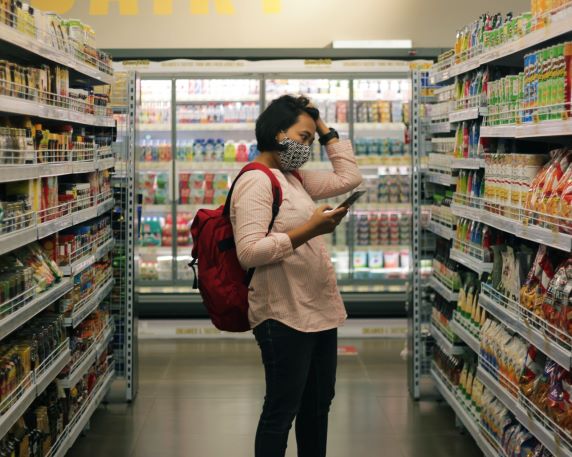By now, most Americans have felt the effects of global crises on their grocery bills. Recent research published in the journal Nature Food has found this to be a worldwide phenomenon. As part of a project called Food Prices for Nutrition, professor William Masters at the Friedman School of Nutrition Science and Policy at Tufts University and a group of graduate students gathered data on retail prices for diverse food groups around the world, and found that the cost of groceries rose in tandem with COVID-19 case counts across the globe.
“We used big-data techniques to look at prices for these diverse retail food items, across each food group needed in a balanced diet, in as many countries as possible, to understand changes in access to a healthy diet that might be caused by the spread of COVID-19 and other factors,” said Masters, who has a secondary appointment in the Department of Economics at Tufts.
To measure the links between food prices and the spread of COVID-19, Masters and his team compared the retail prices of eight food groups and overall consumer prices in 180 countries between January 2019 and June 2021, making sure to distinguish between the agricultural commodity values reported in the media and the retail prices that consumers pay. “Bulk rates for wholesale items, like 10,000 pounds of wheat on a boat, are not what people pay when they buy a five-pound bag of flour or a half-pound loaf of bread at their local shop,” Masters said.
They learned that during each country’s successive waves of COVID-19, national consumer price indexes tracking the average prices of all food rose significantly above pre-pandemic levels. Average prices for specific food groups recommended for a healthy diet—fruits, vegetables, nuts, seeds, pulses (seeds used as dry grains), dairy, eggs, and meats—rose in proportion to COVID-19 cases and deaths.
Countries with more cases and deaths, such as the U.S., saw some of the greatest increases in retail food prices, while countries reporting lower COVID-19 numbers—such as France, Australia, and Japan—saw less significant shifts. “In places like the U.S., letting the pandemic run was not just devastating to people who lost family members—it was also very expensive for everyone else,” Masters said. “In contrast, countries that got lucky or had better public health responses had less illness among workers, which we think helped keep food costs low.”
The timing of food price changes in each country suggest that costs were affected by labor shortages due to illness, especially for foods whose production and distribution require indoor face-to-face contact, such as greenhouses and food processing facilities. “In the U.S., our biggest outbreaks among food system workers were in the meatpacking sector,” Masters said. “The virus spread faster because plants stayed open at the height of the pandemic, with hundreds of workers in one building, often standing shoulder-to-shoulder along the production line.”
Higher food prices are especially harmful for lower-income families because food makes up a larger portion of their total spending, in some cases 60 to 80 percent, said Masters. “When food prices rise, diet quality is downgraded, and the household’s spending on education, health, and so forth all gets squeezed in order to meet immediate calorie needs.
The health of mothers and children is particularly vulnerable, he said, with long-term consequences. “When we look at outcomes, children who are infants at times of scarcity are worse off forever,” he said. “Parents want to feed their children well, but food price spikes like those caused by COVID-19 or Russia’s invasion of Ukraine may make that impossible.”
Masters said countries need to continue efforts to contain COVID-19 and its variants to keep food supplies flowing. “When countries fail to control disease, food and other things become more difficult to get. Public health is an investment in the economy,” he said.
Masters also urged support for the World Food Programme and other safety nets around the globe. He pointed out that despite higher food prices, food insecurity rates did not rise during the pandemic in the U.S. thanks to federal safety nets such as SNAP, which provides nutrition assistance for low-income families. This kind of protection for vulnerable households during crises is especially critical in countries whose income levels are lower on average, he said. “Families often need outside help to make it through the crisis and recover quickly, to get back on a path of sustainable growth.”
Story Credit: Tufts University/Newswise
Photo Credit: Viki Mohamad/Unsplash



































